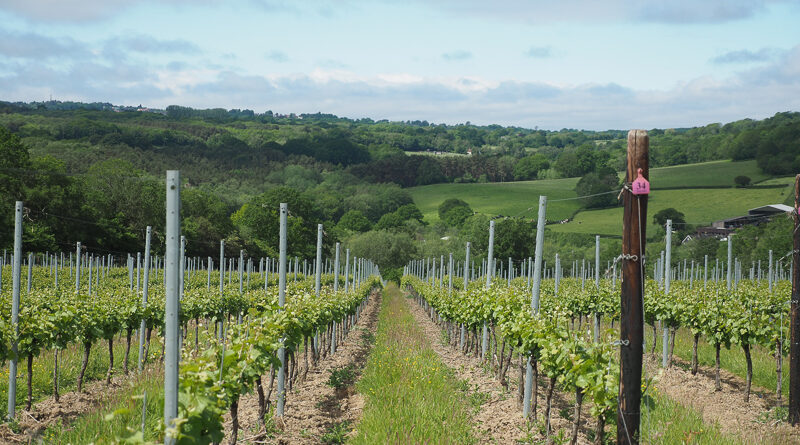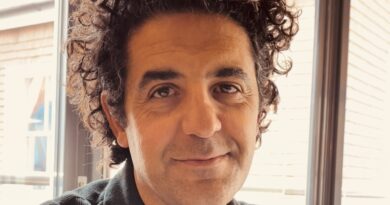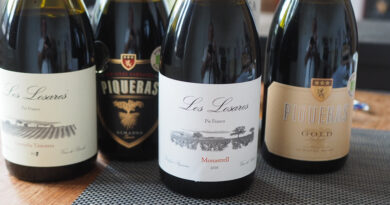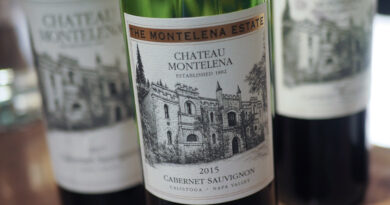Busi-Jacobsohn, an exciting new English sparkling wine producer
Website: https://www.busijacobsohn.com/
Based in Eridge, near Tunbridge Wells, a new sparkling wine producer has sprung up. Busi-Jacobsohn.
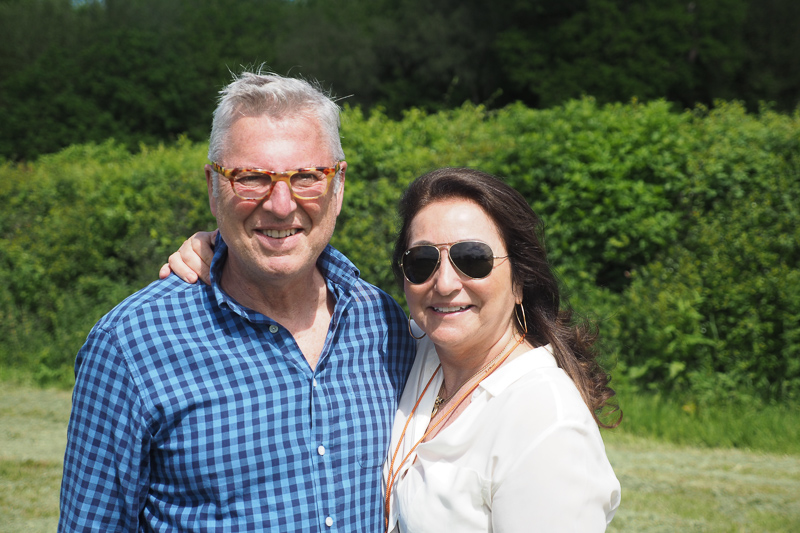
Susanna Busi Jacobsohn and Douglas Jacobsohn moved to the UK from Sweden. Douglas was working as a chief executive of Skuld, a Norweigan marine insurance company, and they opened an office in London. They figured that the UK would be a good place to educate their boys. They bought their farm in 2014. In 2015, they decided to plant a vineyard, as Douglas was reaching the end of his time at Skuld and needed a fresh challenge.
‘We always had an inclination to farming in one way or another,’ says Douglas. Their ideas about viticulture were solidified when they met someone who introduced them to Ian Kellet, owner of Hambledon. They met for lunch, and he invited them both to Hambledon, where they took part in a dosage trial. ‘We were hooked,’ Douglas says.
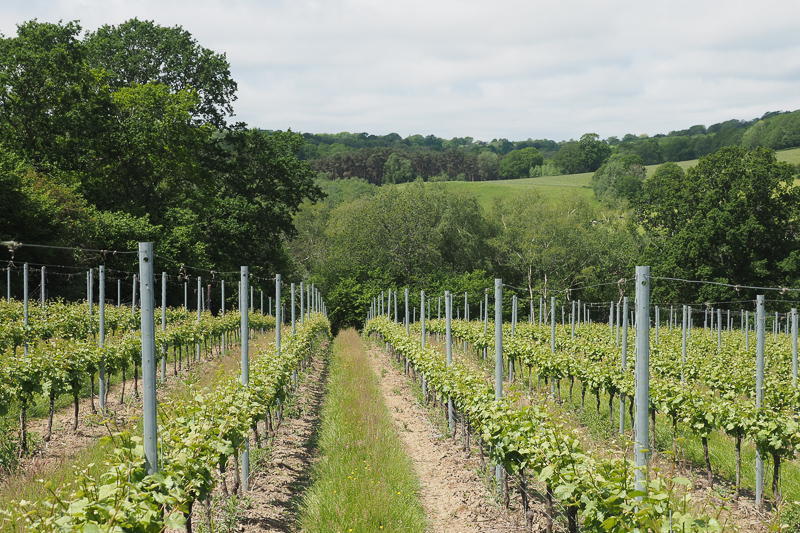
The vineyard is on a gentle slope facing south west.
‘We decided very quickly to plant even before we moved here,’ says Susanna. They have planted 5 hectares of their 20 hectare property to vineyard. ‘It all came out very well,’ says Douglas, ‘but it is hard work: you need to be on it all the time.’ They have the classic Champagne varieties: Chardonnay, Pinot Noir and Pinot Meunier, in the proportions 40/40/20.
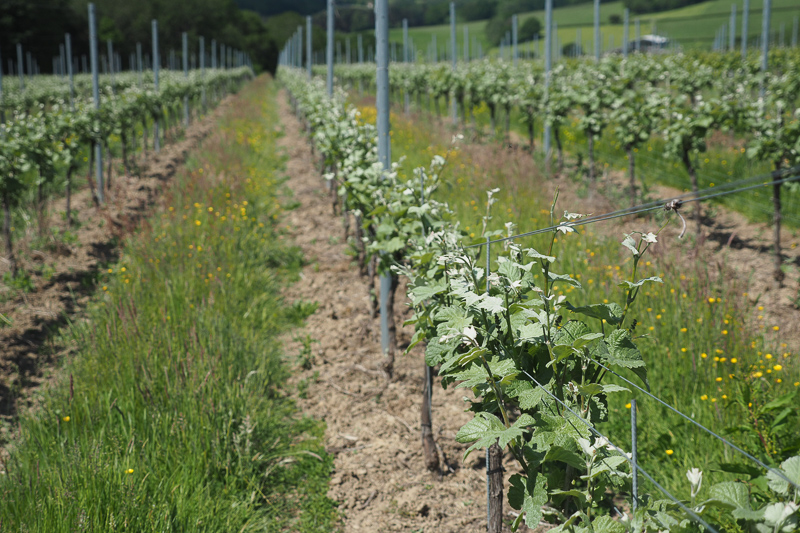
Douglas, who is a youthful-looking 67, does all the farming. ‘It is full time work,’ he says. He did a 3 month crash course in viticulture at Plumpton, and is part of the Wine GB South East viticulture group, which helps share information and experience.
They both love Champagne, and they tried a lot of English wines before they decided to go ahead, both still and sparkling. Two sparkling producers in particular stood out for them. ‘We thought, if you can get quality like this, it is worth doing,’ says Douglas.
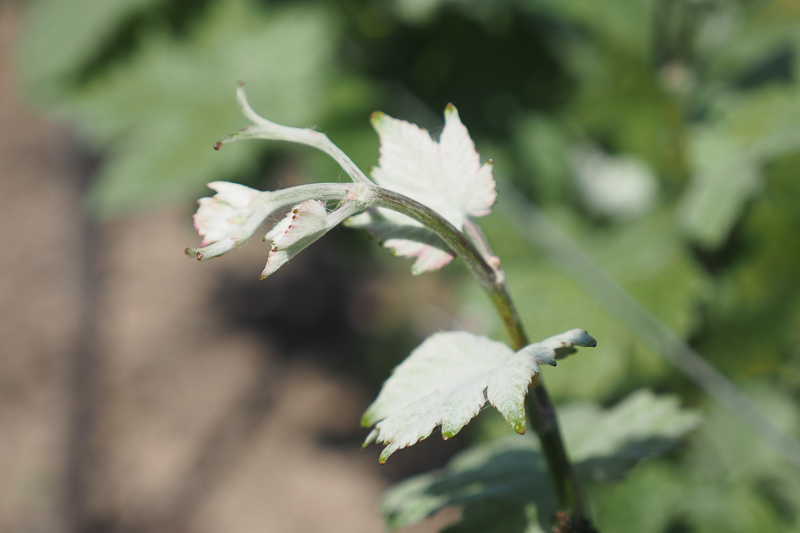
They have no plans to make a still wine. ‘We work very hard with our branding,’ says Douglas, ‘and we don’t want to dilute that by making a small batch of something.’
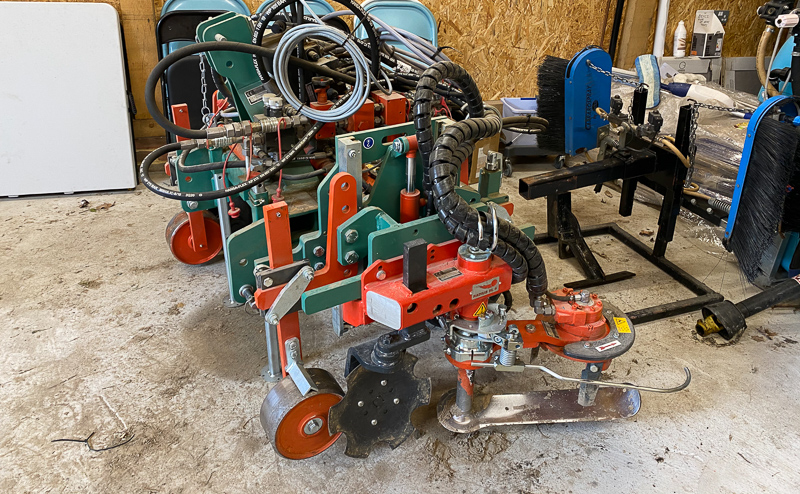
Douglas has a Clemens cultivator for weed control under the vines, so he can avoid using herbicides. ‘Glyphosate is going to go,’ he adds. The Clemens is custom fitted so that it can do two rows at once, thus halving the number of passes through the vineyard by tractor.
But he’s not organic or biodynamic, because he doesn’t want to use copper, which is the only way to deal with downy mildew effectively allowed by organics.
A short film from the visit:
The vines have now had four crops. 2017 was a small first crop where they just put everything they got together. With the current release, 2018, there are four wines in the range. A classic Brut, a rosé, a Blanc de Blancs and a Blanc de Noirs. The first two of these have been released already; the latter two are still undisgorged.
Frost protection is by means of a cold air drain machine at the bottom of the vineyard. This was on for a total of 40 hours earlier in the season, which is a lot. The neighbours weren’t best pleased. This machine grabs the cold air and throws it up in the air. They suffered hardly any damage.
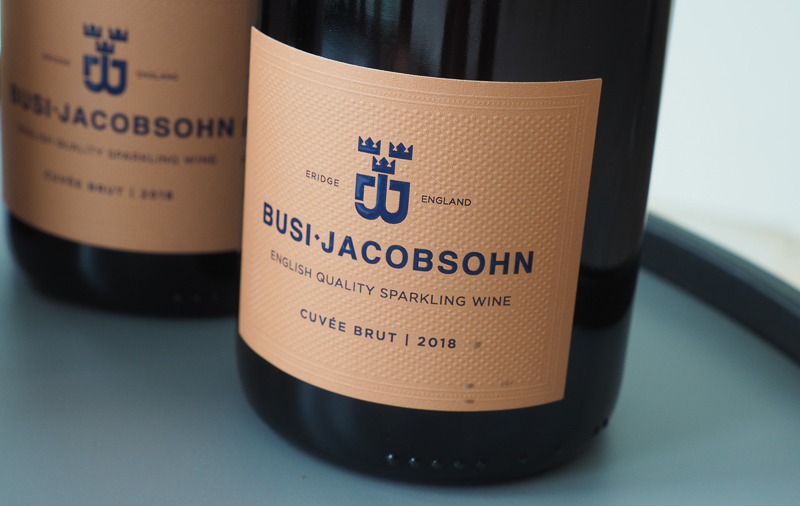
The soils here are clay-based greensand with some sandstone. ‘It has been very good,’ says Douglas. ‘It’s beautiful.’ They installed drainage tiles to help in wet conditions: it was so wet when they planted in May 2015 that the machinery couldn’t get into the field and it had to be done by hand.
They are only making vintage wines, because they want to express each year’s conditions. The 5 hectares produce around 35 tons of grapes, which translates into some 25-30 000 bottles annually. With this volume, it’s not financially sustainable to have a winery and employ a winemaker, so the wines are being made at Ridgeview. Simon Roberts at Ridgeview allows them to participate a lot in the winemaking process, doing blending, dosage trials and so on.
There’s also a really nice tasting room on the vineyard for visitors.
THE WINES
Busi-Jacobsohn Cuvée Brut 2018 England
60% Chardonnay, 25% Pinot Noir, 15% Pinot Meunier, dosage 6 g/litre. This is tight and delicate with lovely precision. It’s dry, pure and transparent. Such a fine expression with lovely citrus fruit: it’s really impressive in its purity. 92/100 (£38 direct and also from The Sourcing Table [I declare an interest as contributing editor])
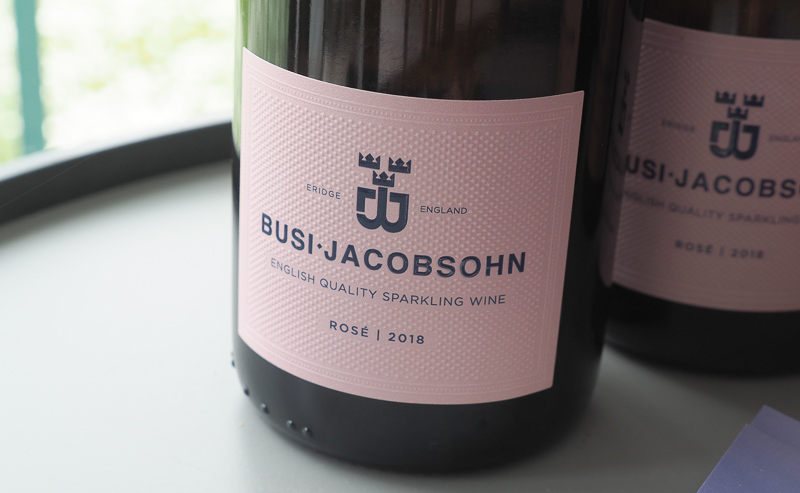
Busi-Jacobsohn Rosé 2018 England
78% Pinot Noir and 22% Pinot Meunier with 7% of the wine fermented in oak. 4.6 g/litre dosage. This is delicate and fine. Very pure with a lovely citrus drive and a touch of spice. Has a slight grip to the finish. Very fine and fruity with a lovely delicacy. Pure and understated. 92/100 (£39 direct)

